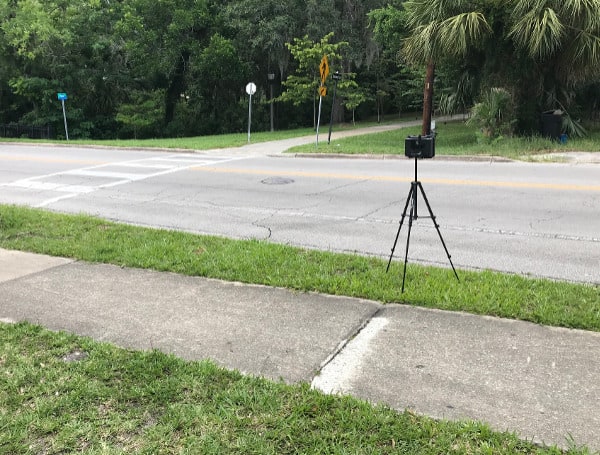With a device they can make on their own for only $159, arborists can for the most part accurately assess whether people and pedestrians are at risk of danger if a tree falls in your yard. That’s way less than the machines on the market, which cost as much as $2,200.
More specifically, tree professionals can rate whether people or vehicles are in the fall zone of the tree, which can affect the outcome of a risk assessment and the subsequent mitigation.
That data-driven determination can save homeowners and businesses time and money because it can mean the difference between retaining a tree or its removal.
But how accurate is the DIY device? Ryan Klein wanted to test its precision. One way to find out is by calculating the target occupancy rate: a measurement of how frequently vehicles and pedestrians come close enough to get in the way of a falling tree.
Here’s a way to look at target occupancy rate: If an average of 100 people walk past a tree each day, and they spend an average of 4 seconds in the fall zone, then the target occupancy is 400 seconds (or 6 minutes 40 seconds) per day in the area where the tree might fall. That’s less than 0.5% of every day where a person might be within the fall zone if a tree were to fail.

For a new study, Klein tested the accuracy of the homemade device vs. the technology you can buy commercially. He found that you can quantify the target occupancy rate by using the low-cost traffic monitoring equipment.
“If the arborist that’s assessing the tree adheres to this type of calculation, you have a much better idea of the potential risk associated,” said Klein, a UF/IAFS assistant professor of environmental horticulture. “If a tree is likely to fail, the consequences are deemed to be unacceptable, and the occupancy rate is high, then the tree will likely need to be mitigated (i.e., pruned or removed) to bring the risk to an acceptable level.”
While the study’s findings are most useful to arborists, homeowners should be aware of defects in their trees and know how those defects might lead to the trees falling on property or people. Specifically, the more targets (i.e., people, vehicles, property), the higher the risk.
Until recent studies by Klein, arborists in the United States looked at trees and their surroundings and assessed the tree’s fall risk using subjective measures. The UF/IFAS tree researchers are trying to give arborists quantitative data so they can more accurately figure out if a tree might fall and cause damage or injury.
Although the homemade device generally works well, it gets less accurate when the temperature reaches 90 degrees or warmer. He and his UF/IFAS colleagues are working to hone the technology.
Klein offers this advice: “Be proactive with your tree care rather than reactive. Prior to planting,
select quality nursery stock free of major defects. When trees are young, prune them so they develop a strong structure that is free of major defects”
“When in doubt, call professionals,” he said. “Mismanagement by the homeowner or even by professionals can have long-term effects on the health/structure of trees and their associated benefits. Over time this can pose potential risks to public health and safety.”
He conducted the new research with Andrew Koeser, an associate professor of environmental horticulture at the Gulf Coast Research and Education Center, and Chris Dutton, a post-doctoral research associate in the UF biology department. Click here for more information about tree-risk assessments.
Visit Tampafp.com for Politics, Tampa Area Local News, Sports, and National Headlines. Support journalism by clicking here to our GoFundMe or sign up for our free newsletter by clicking here.
Android Users, Click Here To Download The Free Press App And Never Miss A Story. Follow Us On Facebook Here Or Twitter Here.


